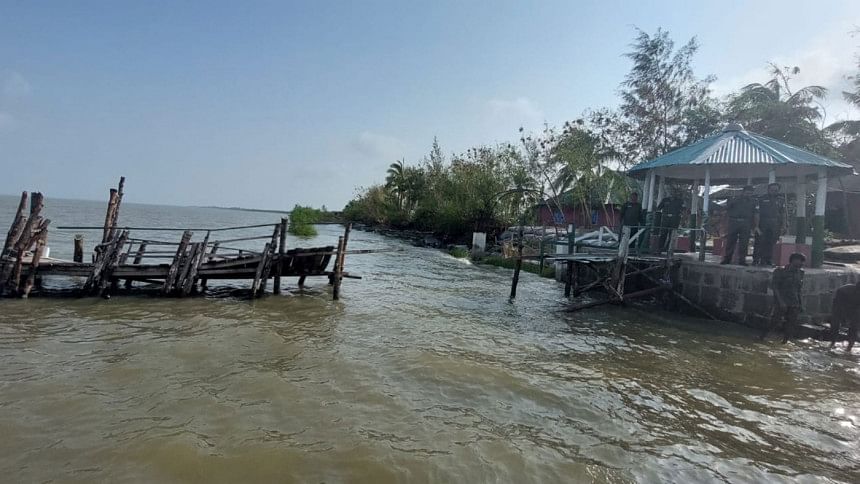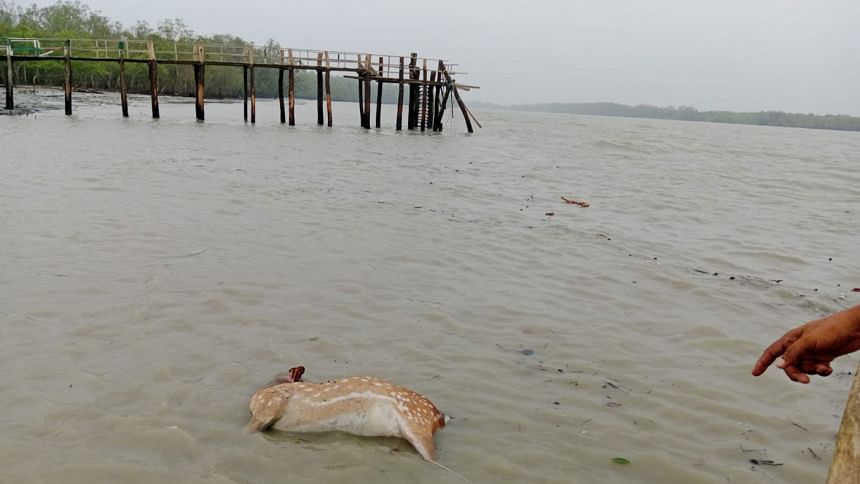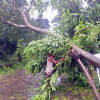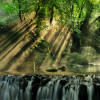Sundarbans: no time to heal between cyclones

In 2007, Cyclone Sidr ripped through the Sundarbans, the world's largest mangrove forest. The forest took the brunt of the storm, saving human lives by slowing down its destructive force.
However, it paid a heavy price. One-fourth of the forest area was damaged, with 8-10 percent completely destroyed and 15 percent partially damaged. Infrastructure within the Sundarbans was severely impacted, with offices, communication towers, and watercraft destroyed. Wildlife suffered immensely, with loss of habitat, displacement, and scarcity of food and water.
Two years later, Cyclone Aila struck. Around 40 percent of the forest's vegetation was destroyed, and 30-35 percent of the mangrove cover was damaged. The impact on wildlife was devastating, with endangered species such as tigers facing habitat disruption and food scarcity.

The Sundarbans continued to face the wrath of cyclones like Bulbul and Amphan. Each time the forest began to recover, another cyclone hit.
Then came cyclone Remal. Trees were uprooted, and a 10-12 ft tidal surge submerged the forest for nearly two days.
As the water recedes, the full extent of the damage is becoming clear. Carcasses are being recovered while the forest floor is littered with uprooted trees.
The Sundarbans is already grappling with the negative impacts of climate change, including rising salinity and extreme weather events like cyclones.
Given the repeated battering by cyclones and the ongoing effects of climate change, experts wonder how long it will take for the Sundarbans to recover. The answer? Maybe decades.
And before it fully recovers, there might be another cyclone waiting to strike... maybe next year or the year after.

DAMAGE TO WILDLIFE
According to the Forest Department, a total of 138 animals were found dead, including 134 deer and 4 wild boars. Additionally, 18 deer and one python were rescued and released back into the forest.
Experts said the actual number of dead animals could be higher. Countless wildlife, particularly deer, boars, snakes, and monitor lizards have been swept away by an 8 to 12-foot tidal surge.
SALINITY INTRUSION
Saline water intrusion into freshwater ponds in the Sundarbans has led to a crisis of fresh water, impacting both wildlife and human communities.
Dr Abu Naser Mohsin Hossain, divisional forest officer of Sundarbans West Forest Division, said 14 ponds in the division are now submerged in saltwater. "Desalination will be a major challenge," he added.
Mihir Kumar Doe, conservator of forest in Khulna circle, echoed him.
INFRASTRUCTURAL DAMAGE
The forest department estimates infrastructural damages at over Tk 6 crore. Sundarbans West suffered Tk 2.15 crore in losses, while Sundarbans East incurred Tk 3.50 crore in damages, according to Nurul Kabir, DFO of East Sundarbans.
The nipa palm forests spanning 11km were severely affected by the cyclone, with a tidal surge of up to 12 feet for nearly 36 hours. Eleven kilometers of Golpata forest in Burigoalini, Nalian, and Baniakhali areas of the west forest department sustained severe damage.
Naser reported damages to one pontoon gangway, 18 jetties, roads, barracks, solar plates, wireless towers, and generators.
Nurul Kabir mentioned damages to forest offices, patrol posts, freshwater ponds, and jetties, with 20 forest stations and 50 ponds affected, making quantification difficult.
Estimates on the number of trees uprooted were not made as of filing this report, but forest officials say it was not as much as previous super cyclones.
WHEN WILL SUNDARBANS RECOVER
Naser said while infrastructural losses can be recovered, the damage to the forest's biodiversity is irreparable and difficult to quantify.
"The Sundarbans might need 30-40 years to restore its natural balance," he added.
Dr Wasiul Islam, a forestry professor at Khulna University, expressed confidence in the Sundarbans' ability to recover within its ecosystem if left undisturbed.
He suggested employing scientific methods in post-disaster management.
Islam also suggested that effective protection against poachers and providing a conducive environment could help replenish animal populations like deer in the Sundarbans.

 For all latest news, follow The Daily Star's Google News channel.
For all latest news, follow The Daily Star's Google News channel. 











Comments